Hello Friends,
In this issue, I will focus to high degree on Sugata Mitra, grandmothers, SOLE, and present and past students. I hope you enjoy. The last time I focused primarily on students was in
http://www.joanwink.com/newsletter/2009/news0209.php
- Sugata Mitra (2nd time) -“Beam a Gran” and “SOLE”
- José Yourgules
- Black Hills State University ENL (English as a New Language) Program, a few selected student projects
- A School Visit to Celebrate Cinco de Mayo
- DewDrops: SOLE continues
- FVR, Free Voluntary Reading
- Books for Teachers
- Welcome To The World
- New Angels
- Notes from the Real World
I realize that just because I write something, it does not mean that you read it-always a humbling experience. However, what I’m going to write about here will not make much sense until you read about Sugata Mitra and watch that TED Talk video of him in the last WinkWorld.
http://www.ted.com/talks/sugata_mitra_build_a_school_in_the_cloud.html
Here is some more:
http://www.ted.com/talks/sugata_mitra_shows_how_kids_teach_themselves.html
http://www.ted.com/talks/sugata_mitra_the_child_driven_education.html
Every now and then, a really fascinating idea comes down the pike, and for me this time, it is the work of Sugata Mitra. If you remember, he was that guy in India who stuck a computer in a hole in the wall http://www.hole-in-the-wall.com/
of his office, so that it faced the kids in the slums of India? Read more about it: http://www.indianexpress.com/story-print/1080891/
He (and now, we) stand in awe at what kids can learn when their natural curiosity is joined with collaboration on the internet. This month, I want to call your attention to two more of Mitra’s ideas, which I suspect are going to stand the test of time: “Beam a Gran” and “SOLE.”
Beam a Gran (a grandmother)
Mitra noticed that children responded to, not only the computers, but also they responded positively to the type of encouragement, which Grandmothers often give. He said, “Watch a Gran,” and do what they do. In fact, he continued his research by posting an ad in the newspaper in England searching for British grandmothers with broad band and a camera, who might donate an hour a week to SKYPE children. The responses came flooding in, and soon he was “beaming a gran” to children in the poorest areas of India. On SKYPE the children talk about their discoveries, and the grans (grandmas) respond with comments like: Tell me more. How did you do that? Can you show me again? Amazing. What else can you do?
SOLE (Self-organizing Learning Environments)
SOLE is another notion, which Mitra is exploring. He said that after he stuck a computer in the hole in the wall, the children created their own self-organizing learning environments, and he is searching for more examples of SOLE. I believe public libraries, book clubs, and many of the students I have known have SOLE. In what follows, are some present and past students who continue to a part of my SOLE, as we collaborate (ok, we talk about things that matter to us) together on the ‘Net.
José Yourgules, a Former Student
José is one of those treasured (Benson Kids) who were mentioned in the last WinkWorld. (Note to readers: You will need to read this section, for the remainder of this story to make sense. Keep your eyes open for the name, José, as you read.) The next time I wrote about José, I said: A Teachable Heart
Since those days of the Benson Kids, José has stopped copying the names from the Tucson phone book and has gone on to see the world, thanks to his military career. He is now a police officer in FL, and look what he is doing.
José Yourgules
http://www.youtube.com/watch?v=3gNtNgdvS1Q
http://www.tampabay.com/news/humaninterest/compassionate-tarpon-springs-officer-lends-hand-to-homeless/2109390
http://tarponsprings.patch.com/articles/homeless-outreach-officer-s-work-supported-by-residents
http://www.abcactionnews.com/dpp/news/region_pinellas/officer-jose-yourgules-keeps-trying-as-a-one-man-force-against-homelessness-in-tarpon-springs
Selected Student Projects from Black Hills State University
ENL (English as a New Language) Program
Koreen Hammel shares her expanded understandings of the 5 M’s, which she incorporates into Writers’ Workshop. The 5 M’s originally was generated as 6 M’s by Jeffrey Wilhelm and published in Engaging Readers and Writers with Inquiry published by Scholastic in 2007.
Read her 5 M’s
When reading Koreen’s document, I thought of this research paper, which Steve Krashen shared.
Approaches to mathematics, reading, and writing instruction that emphasized meaning were likely to work as well for lower achieving students as for higher-achieving ones, and sometimes better.
Students in classrooms emphasizing teaching for meaning acquired a grasp of “basic” arithmetic computation, decoding, and writing mechanics (e.g. handwriting, spelling, punctuation, grammar) that was at least as good as that of students in classrooms in which these skills, taught out of context, were the main focus of instruction.”
Knapp et. al., 1995, p. 142).
For details: Knapp, M., Marder, C., Zucker, A., Adelman, N., and Needels, M. 1995. The outcomes of teaching for meaning in high-povery classrooms. In M. Knapp (Ed.) Teaching for Meaning in High-Poverty Classrooms. New York: Teachers College Press. pp: 124-144.
Kerry Britton shares a part of her Writers’ Workshop, which focused on “The Crucible” and the Salem Witch Trials.
Read her workshop
Guyla Ness shares her book review of Teaching Reading in Multilingual Classrooms by Yvonne and David Freeman
Read her review
Ceci Estes shares her Writers’ Workshop plan for Ferdinand, the Bull.
Read her workshop
Jodi Holzer shares a day in her life with us, as she teaches English to 40 young refugee students, who come from all over the world. Each of the following countries often has more than one language. In addition, many of these young people spent time in refugee camps in other countries, so the mosaic of their languages is very complex. However, some of the countries and their corresponding languages represented in this English language class are:
Ethiopia (Tigrigna, Amharic)
Sudan, Darfur (Fur; in Sudan, Sudanese is also spoken)
Eritrea (Kunama – 9 languages in this country)
Congo (Burundi)
Burma (Karen)
Nepal (4 major language groups)
Somalia (Somali)
I found the group to be lively, fun, interesting, and highly involved with their learning. When I asked them what was the best part about life in the United States, they told me: freedom, food, and standard of living. One group of young men from Central Africa said that they loved the snow.
The first picture is Jodi’s first class and her first 3 students. The photo on the right is all of her students on the day I visited the classroom in May, 2013.
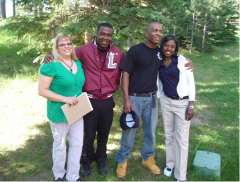


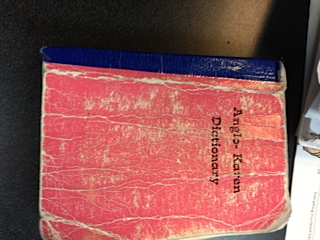
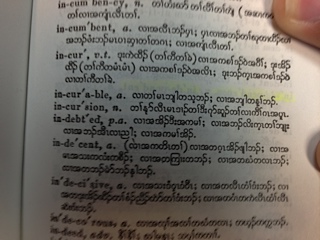
Read Htoo’s Story
Jodi’s English language class is over-flowing with SOLE. The students collaborate and generate their own learning.
A Visit to Atall School to Celebrate Cinco de Mayo
Previously, I have written about this very rural school.
WinkWorld Archive
WinkWorld, Nov. 2008
WinkWorld, Sept/Oct.2008 (Our Boy, Bailey)
This time I visited Atall school, I went to celebrate Cinco de Mayo with Mexican food, music, stories, and dance. Some of the 7 children had never heard of Cinco de Mayo, and they had certainly not eaten arroz y frijoles, con chile y queso. If you look carefully at the following photo of a plate of food, it is safe to guess that the teacher had told them that they had to at least take one bit of everything served.
Take one bite of each thing.
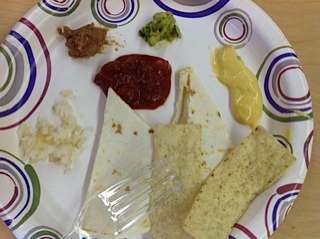
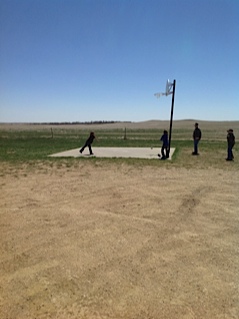
Oh, here is our outfield. The remaining 4 students would run to the swings instead of going to the outfield. No one noticed, nor cared. All that mattered was that they had fun playing ball.

SOLE Continues
And, now for the synergy of SOLE: While I was writing about Mitra, Beam a Gran, and SOLE, Dawn in Santa Fe was simultaneously writing about Mitra and grandmothers. We were doing this on the very same day, without either one of knowing. Here Dawn writes about a Grammie she knows well, and the fierce love of grandmothers in general. Maybe Dawn and I have a bit of SOLE, too.
The Fierce Love of Grandmothers by Dawn Wink
http://dawnwink.wordpress.com/2013/05/07/lifelines-the-fierce-love-of-grandmothers/
Pictures of You by Caroline Leavitt
Click for Your Copy
Books for Teachers
Essential Linguistics: What You Need to Know to Teach Reading, ESL, Phonics, and Grammar by David E and Yvonne S. Freeman
Click for Your Copy

Jackson Williams (IL)
New Angels
Addie Boyd (SD)
The ‘Lil New Mexicans are growing up.











